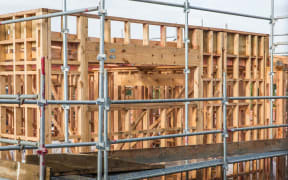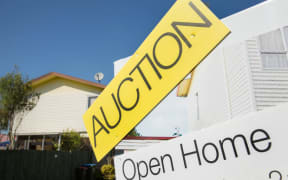
The national average value was 1 percent less than a year ago. File photo. Photo: 123rf.com
House prices are continuing a gradual recovery, but a national price index is still behind where it was a year ago.
The latest QV House Price Index for three months ended January shows the average home increased by 2 percent on December, but it still slower than in October and November.
QV operations manager James Wilson said the housing data remained volatile in some areas where sales numbers were relatively low.
"It doesn't take much change in activity to increase or decrease the value performance of some of our less populous regions, but the overall trend is the housing market is slowly but surely strengthening."
The national average value was $925,461 - 1 percent less than a year ago.
Only Invercargill (-0.6 percent) posted a small drop in average home value in the quarter, following six consecutive months of growth.
Otherwise 10 of the 16 main urban areas recorded more growth in the January quarter, with Queenstown (4.4 percent), Christchurch (3.4 percent), and Dunedin (3.1 percent) experiencing the largest gains on average.
"Over the last few months there's been a pretty major shift in mindset," Wilson said.
"Many prospective buyers are now thinking that things can only get a bit better this year when interest rates eventually reduce and interest deductibility is reintroduced for investors, so they've been cautiously returning to the market in slowly increasing numbers, trying to get ahead of any further price rises."
He said house prices were expected to show slow but steady growth overall, with higher sales activity through to March.
"Outside of our largest cities, I expect that we'll still see some fluctuations from month to month, with patchy, often variable growth - especially where continued high immigration is less of a factor and activity is low," Wilson said.
Decade surge doubles prices
Meanwhile, a new report from property website www.realestate.co.nz shows prices more than doubled in many parts of the country over the past decade.
The figures showed average property prices at least doubled in 12 of the country's 19 regions in the last 10 years, and increased by at least 50 percent in the remaining districts.
Bay of Plenty township Kawerau experienced the most significant growth, with the average asking price almost quadrupling from $122,665 in 2014, to $443,093 in 2023.
Nationally, the average asking price was up by 77.5 percent, increasing from $504,388 in 2014 to $895,289 in 2023.
Realestate.co.nz chief executive Sarah Wood said the data showed New Zealand had a resilient real estate market, despite last year's fall in property prices.
"We saw the market go through a correction in 2023 after rapid growth during the previous few years. Despite prices dropping back last year, they are still up substantially in most places when we compare them to the years before Covid-19 ignited the market."
Between 2019 to 2022, the national average asking price increased by almost 40 percent in the four-year period.
"This unprecedented growth can be attributed to several factors, including low interest rates, population growth, and limited housing supply, which have combined to create a competitive market environment," Wood said.
Kawerau stand-out in price rises
While Kawerau remained New Zealand's lowest-priced district, the data showed its average asking price increased by 261.2 percent during the past decade, reaching $443,093 in 2023.
It was the fifth consecutive year Kawerau has experienced the biggest decade growth, Wood said. "In 2019, the first year we analysed this data, Kawerau was the only district that had doubled in 10 years, up by 112% on 2010. Since then, it has achieved the biggest growth in average asking prices every year compared to the 10 years prior."
Kawerau District Council spokesperson Tania Humberstone said enabling new housing options in the area has been a council priority over the past seven years, spurring demand.
The Hauraki Gulf Islands saw the next biggest increase in prices in the past decade, with a 171.8 percent rise from $713,123 in 2014 to $1,938,342 in 2023.




